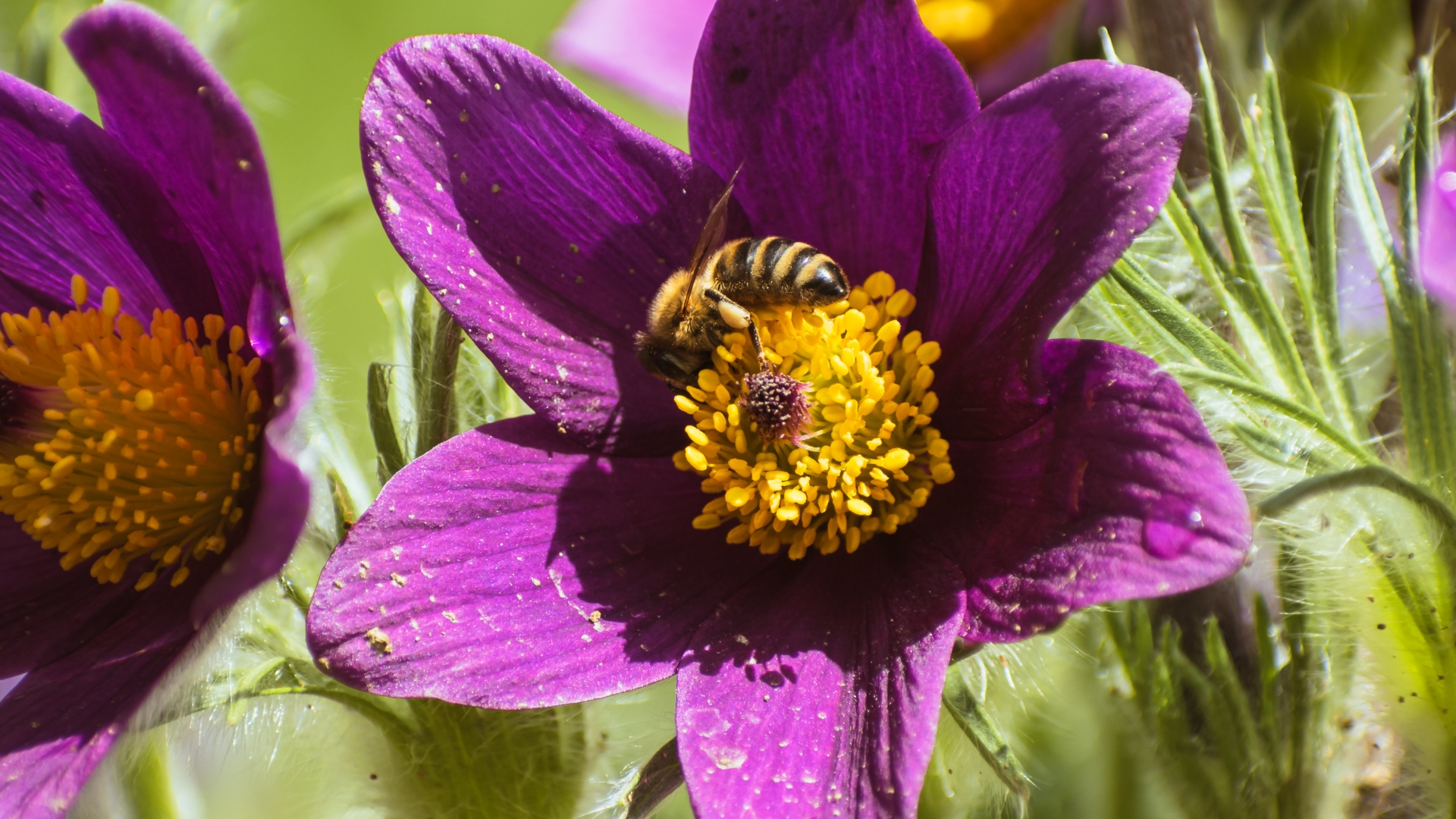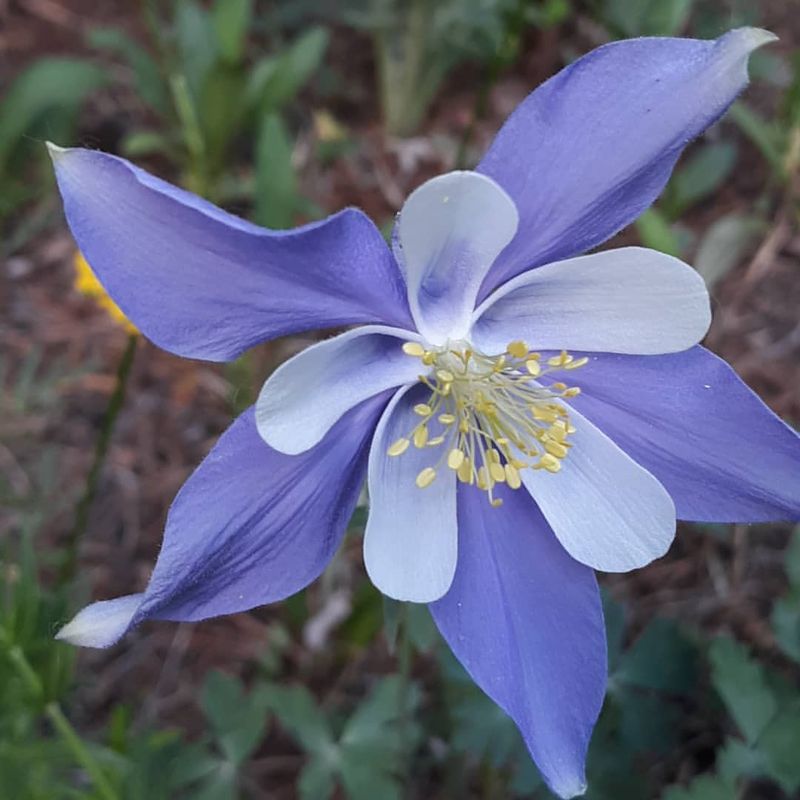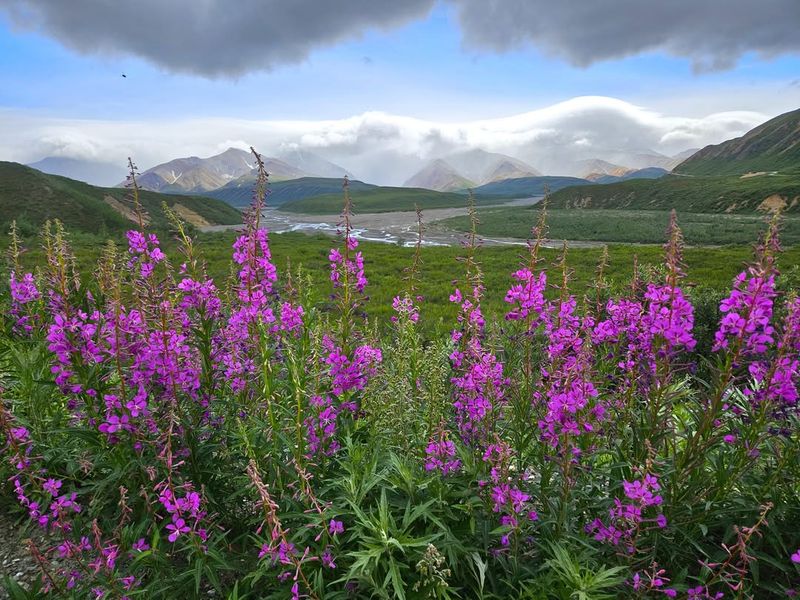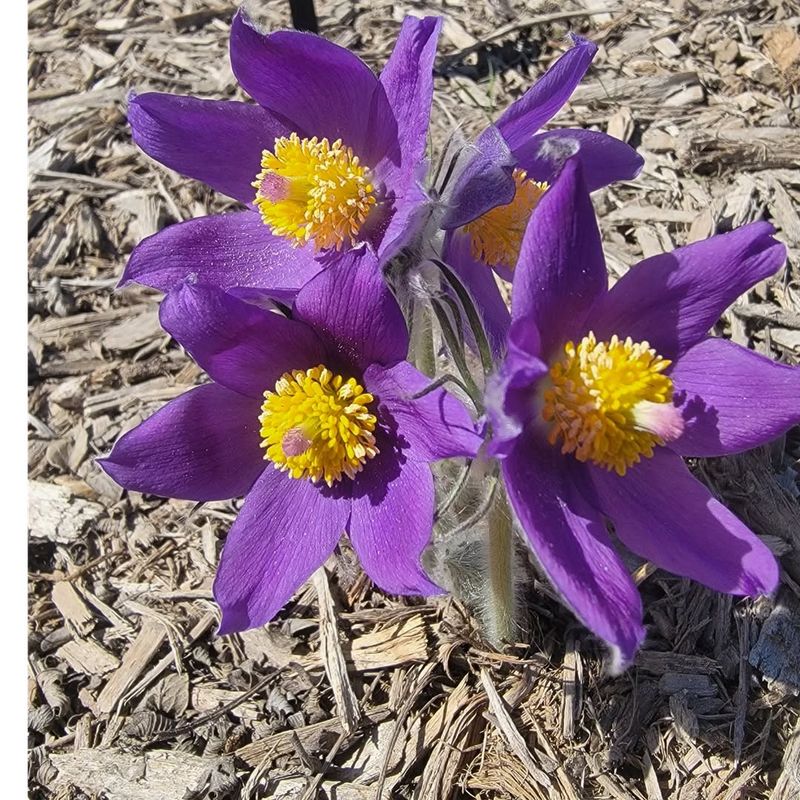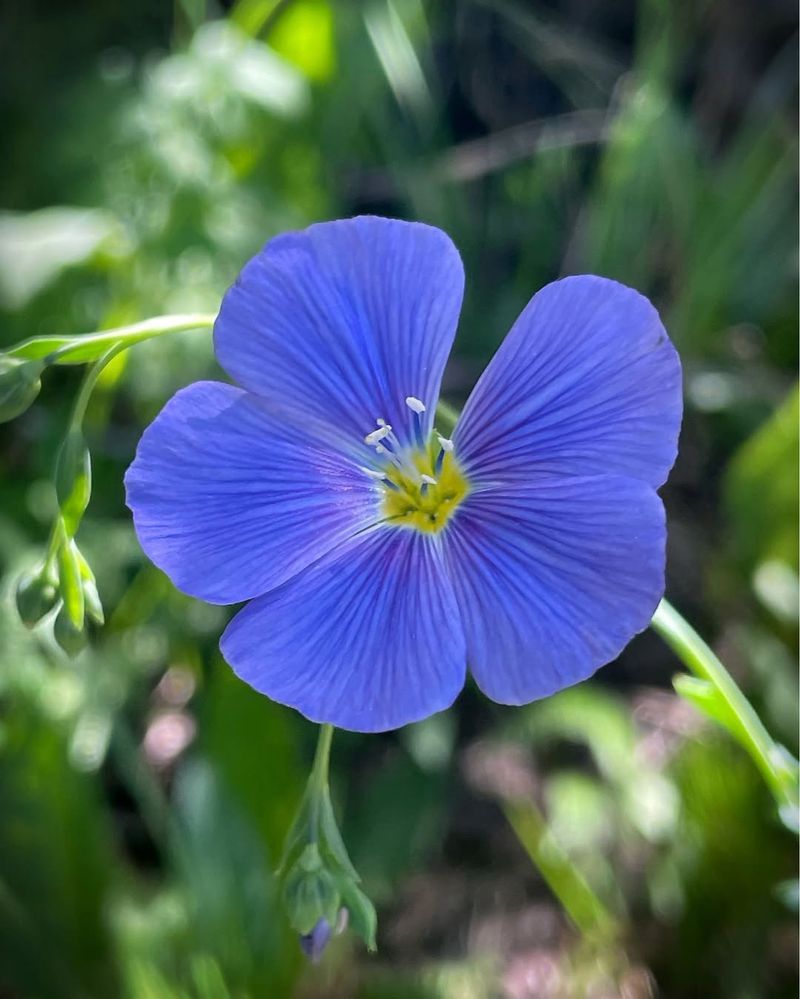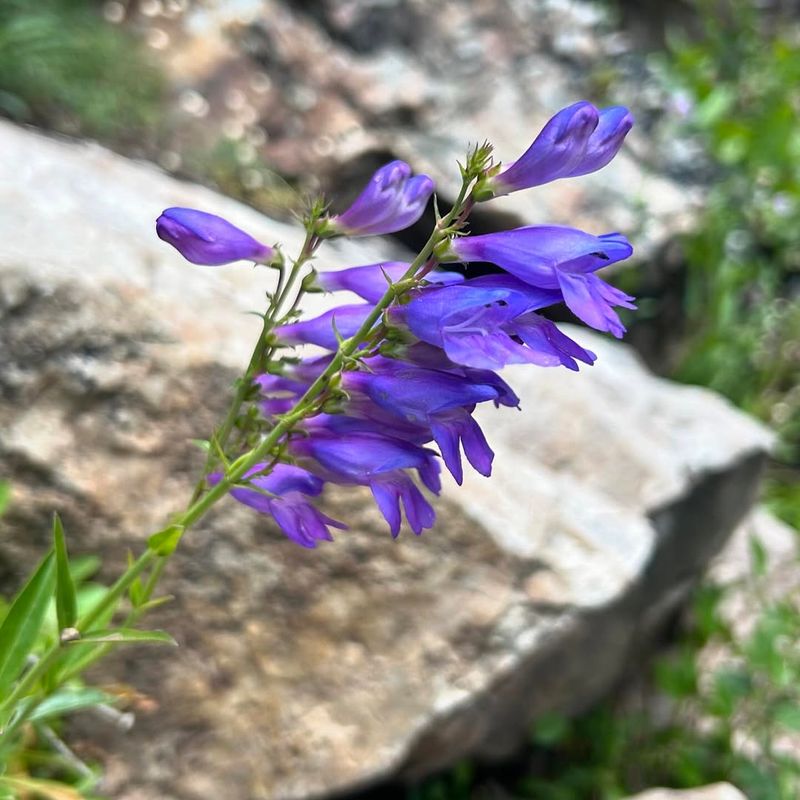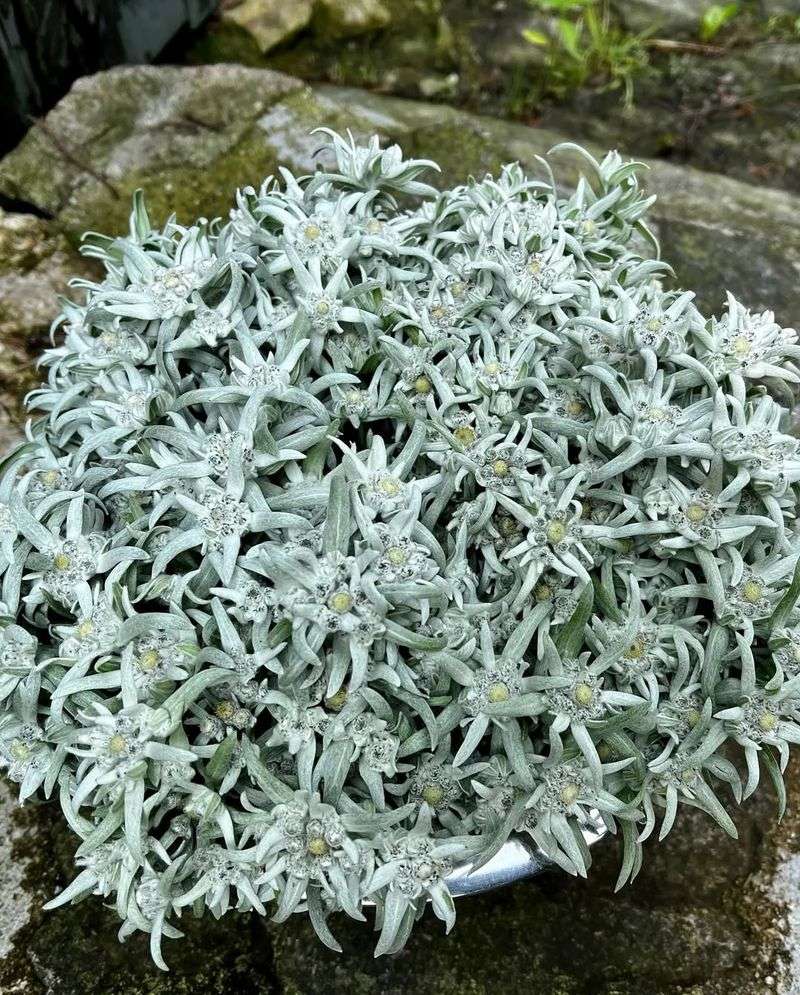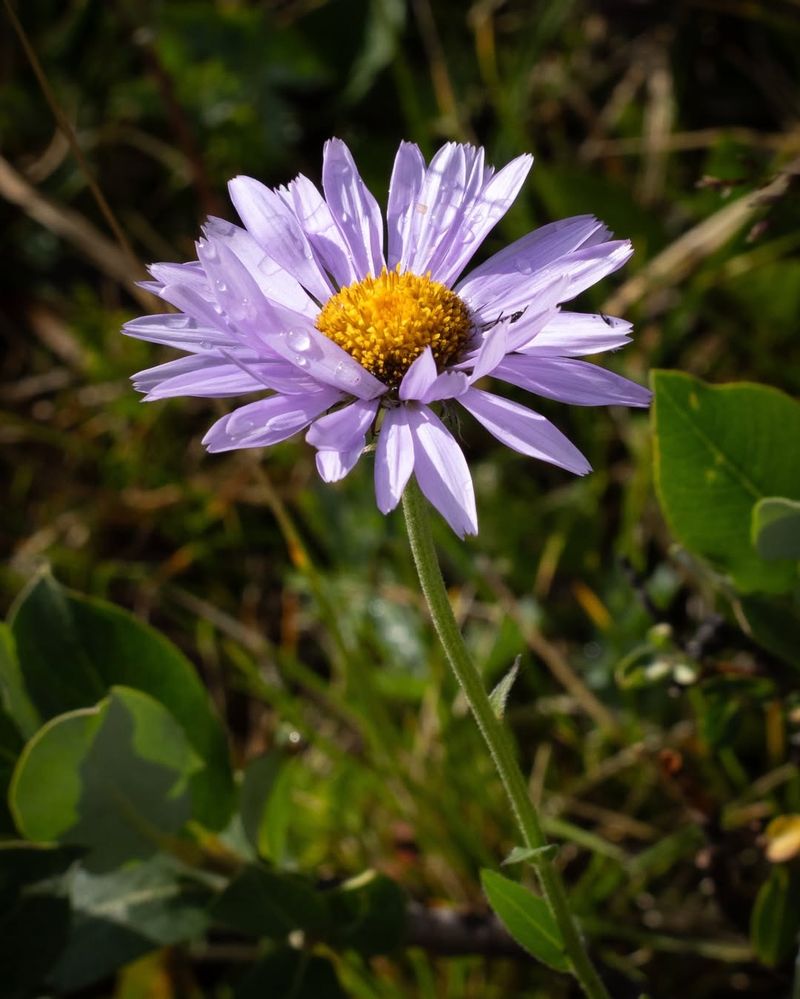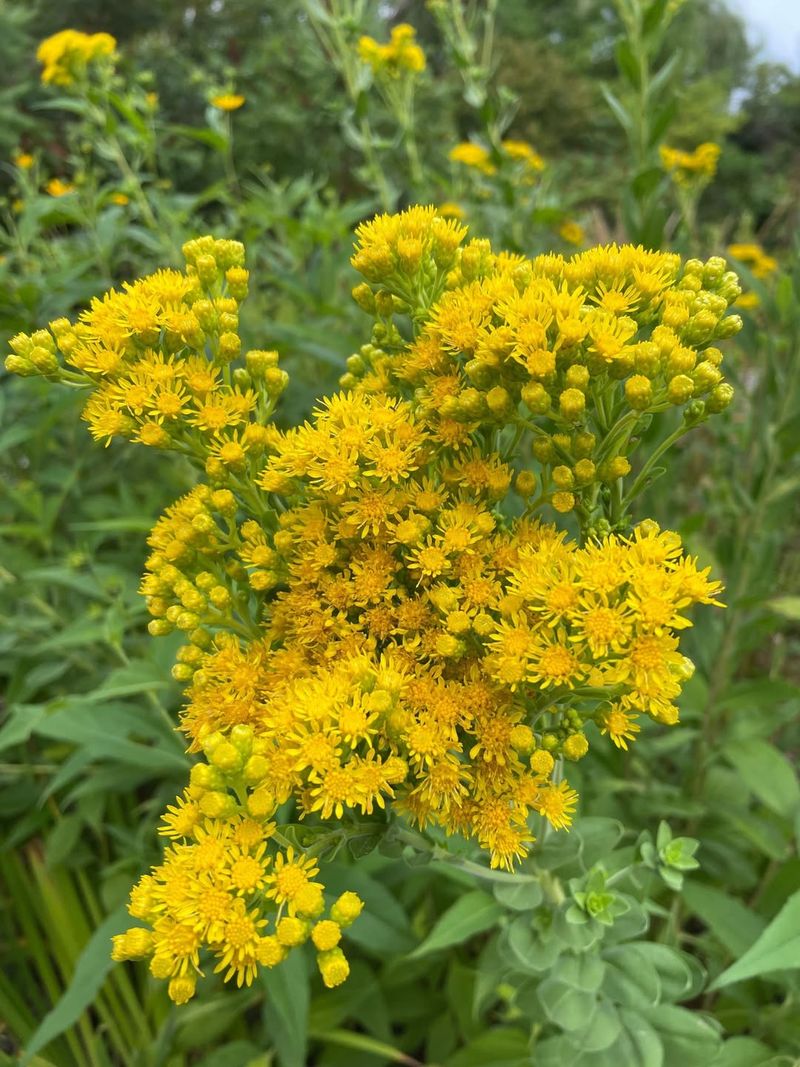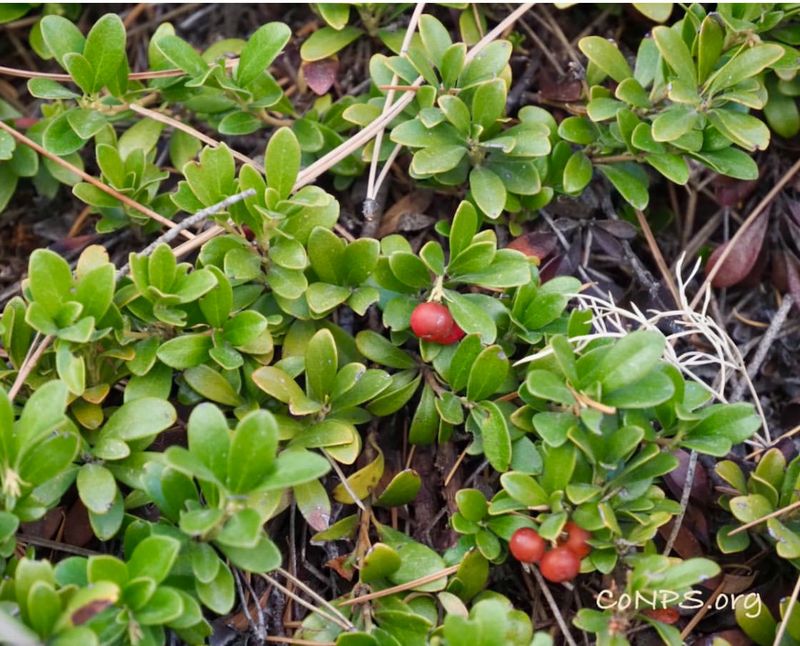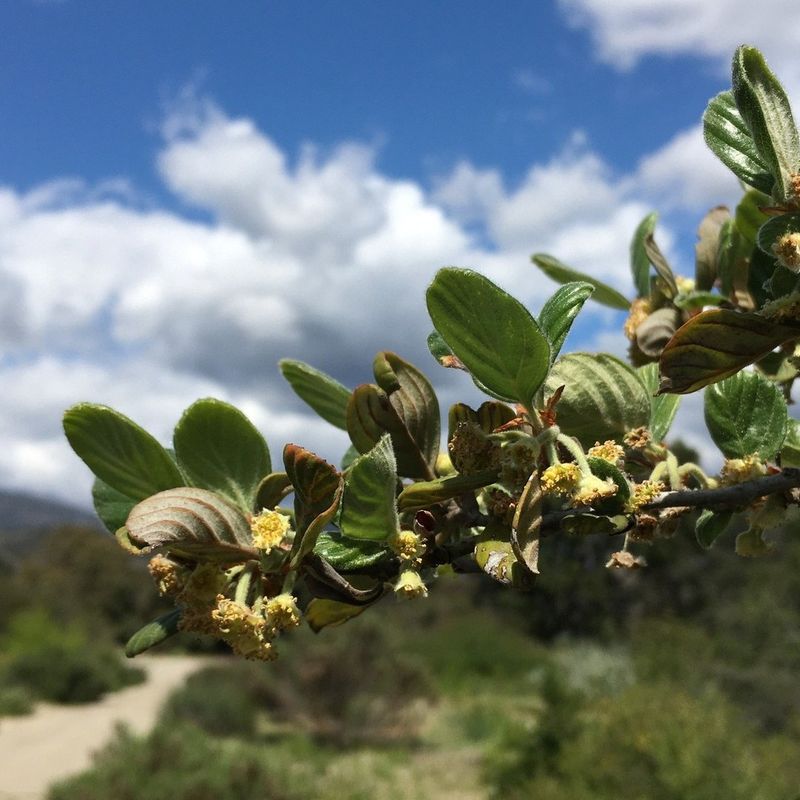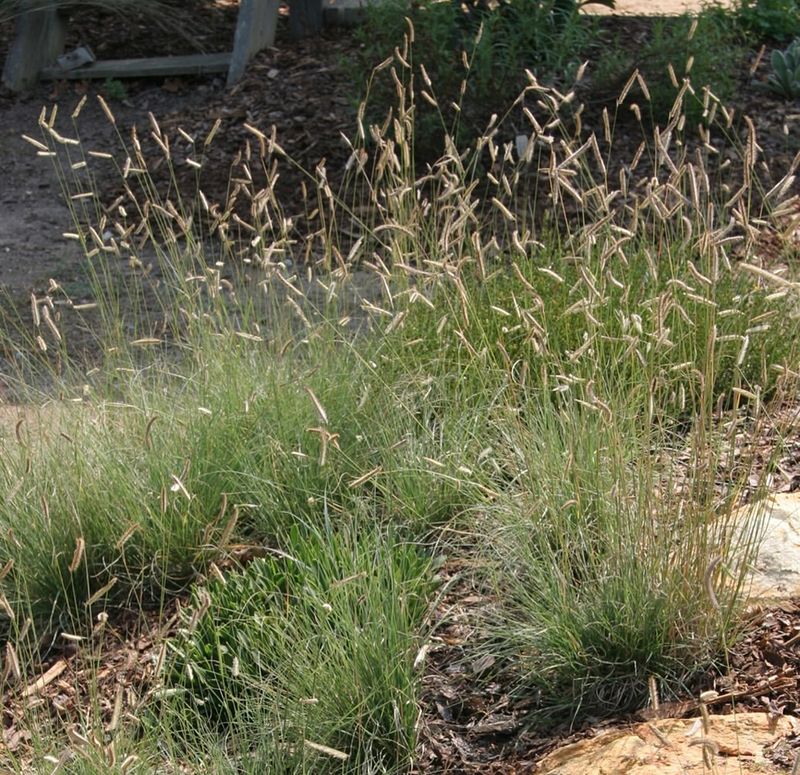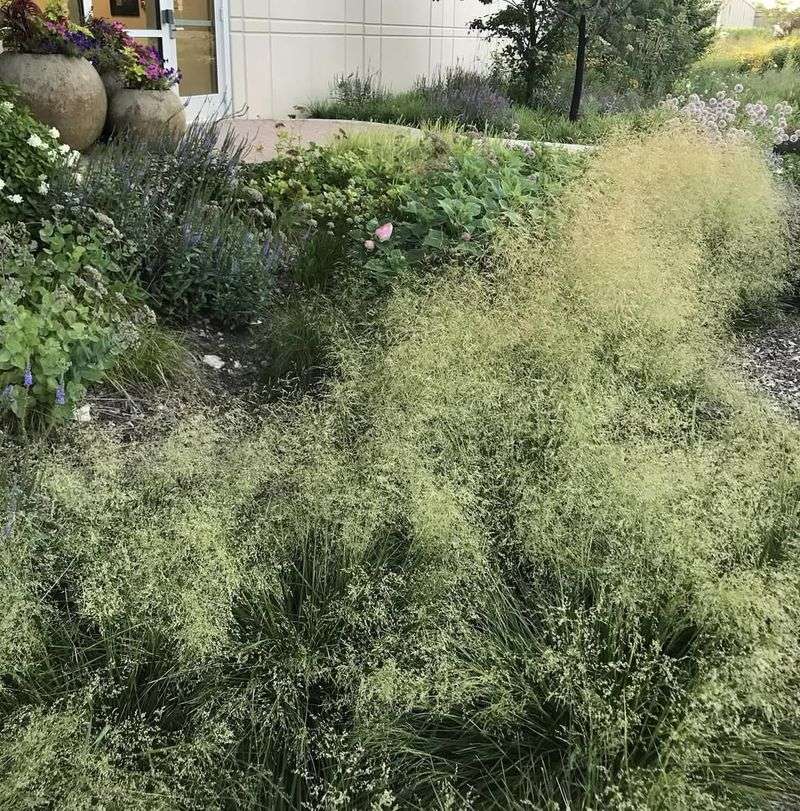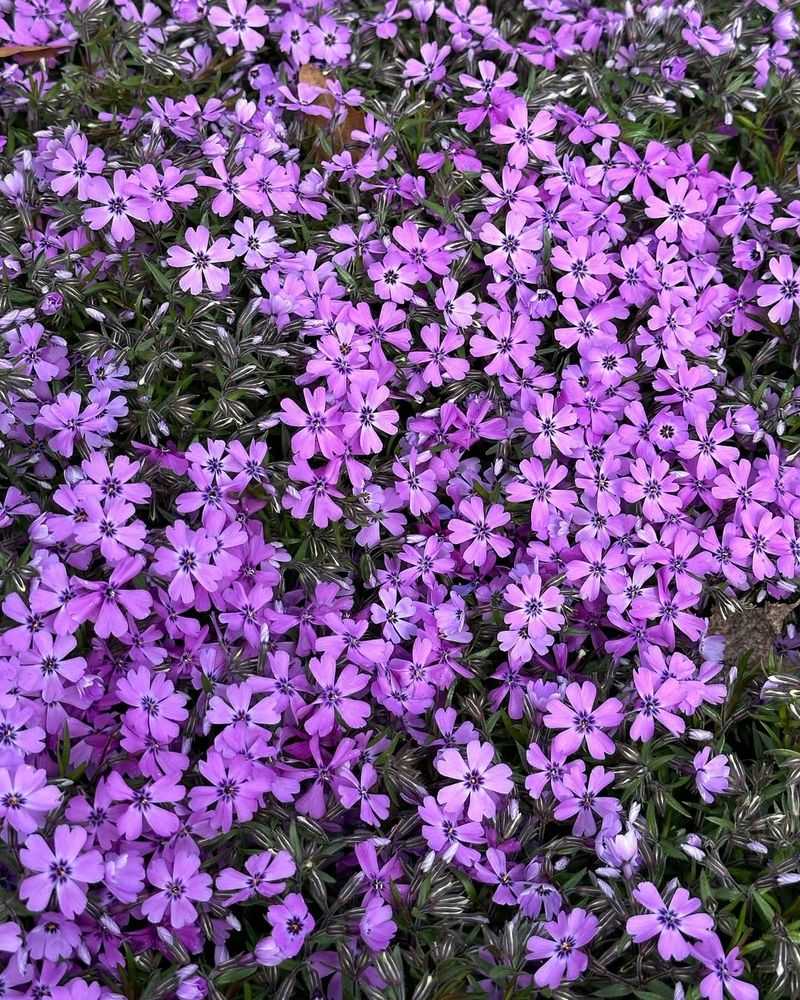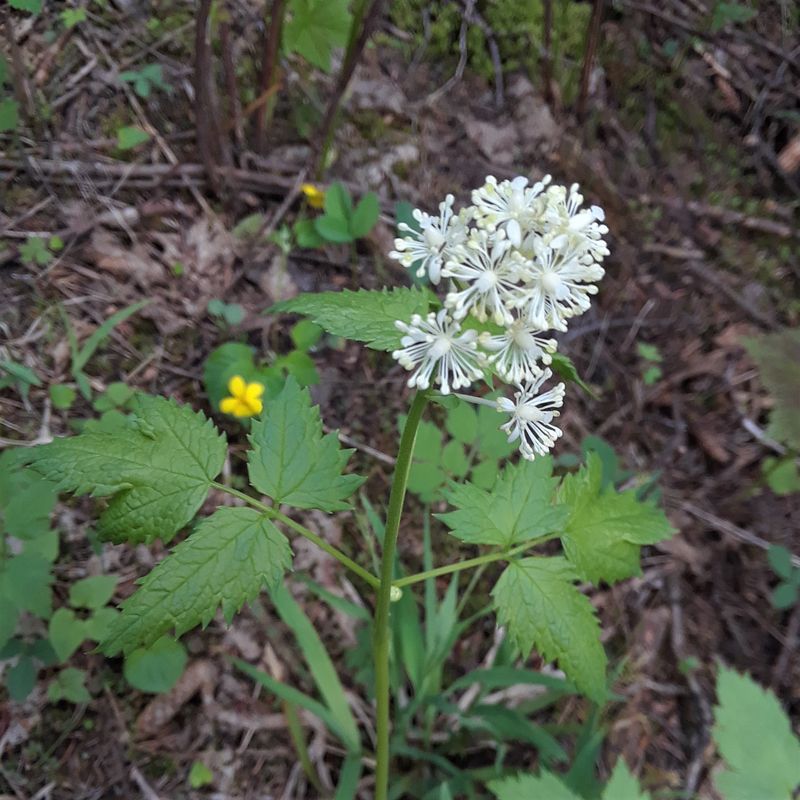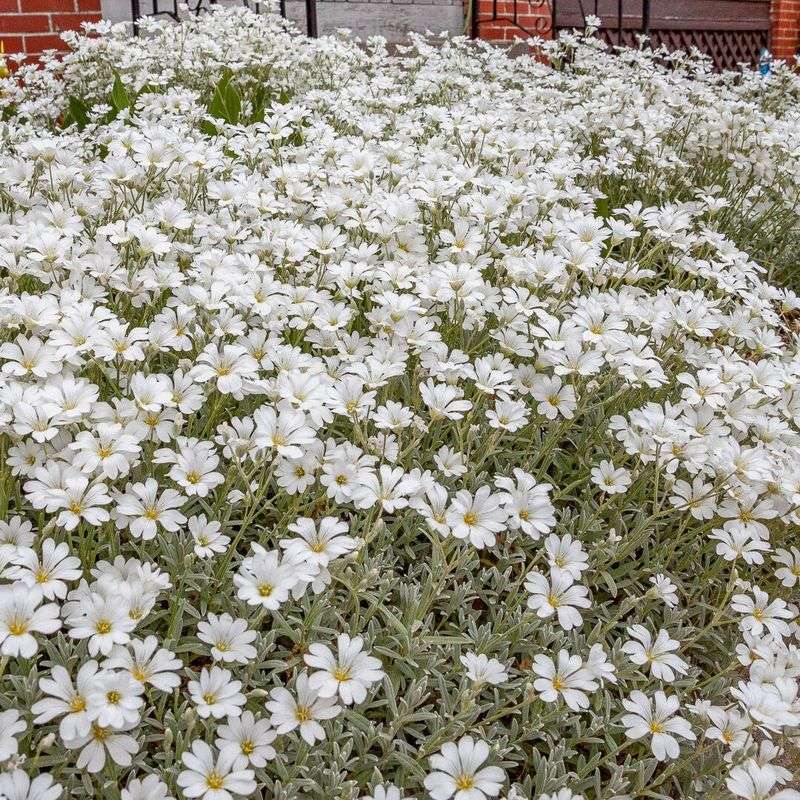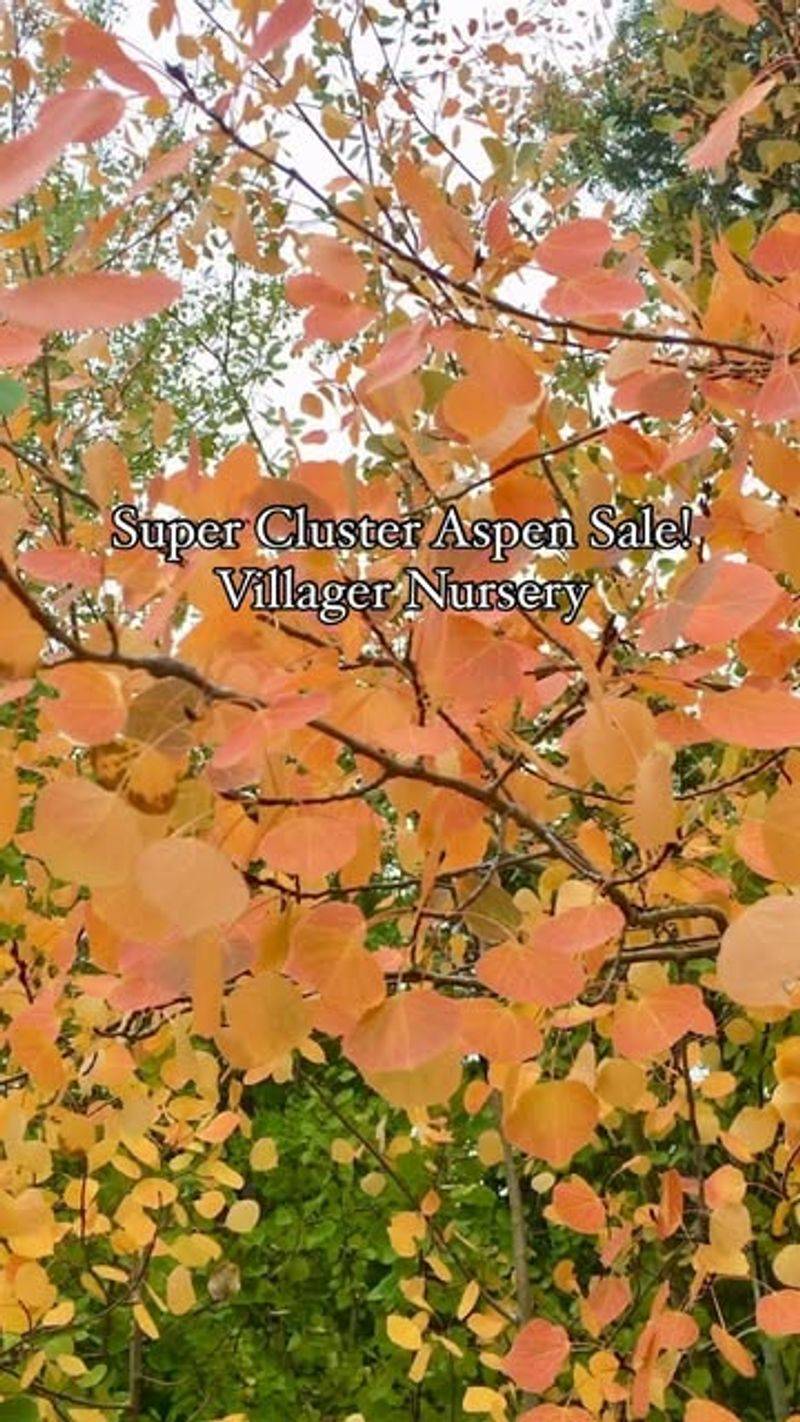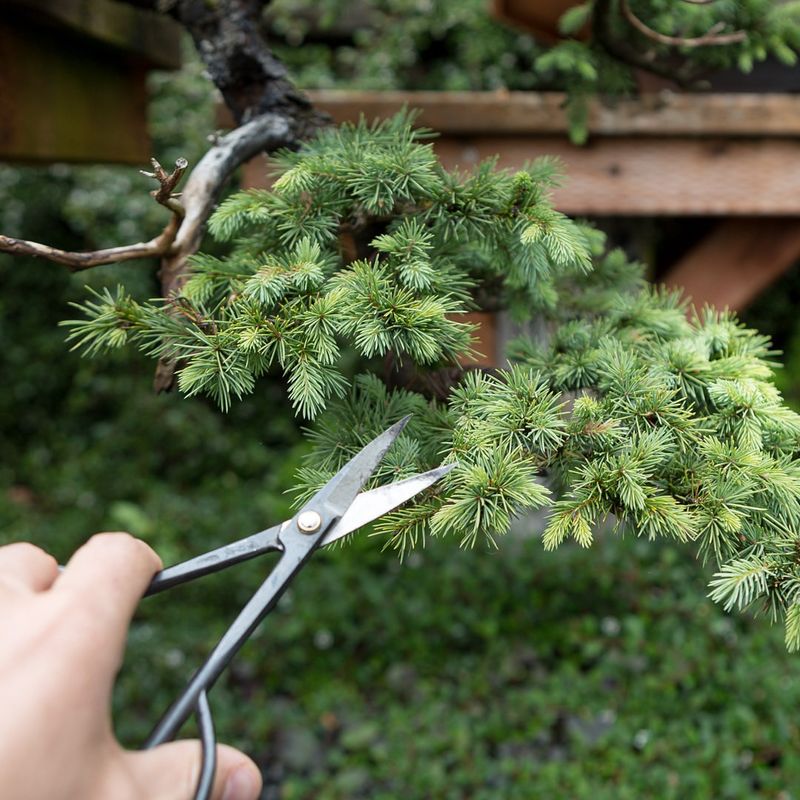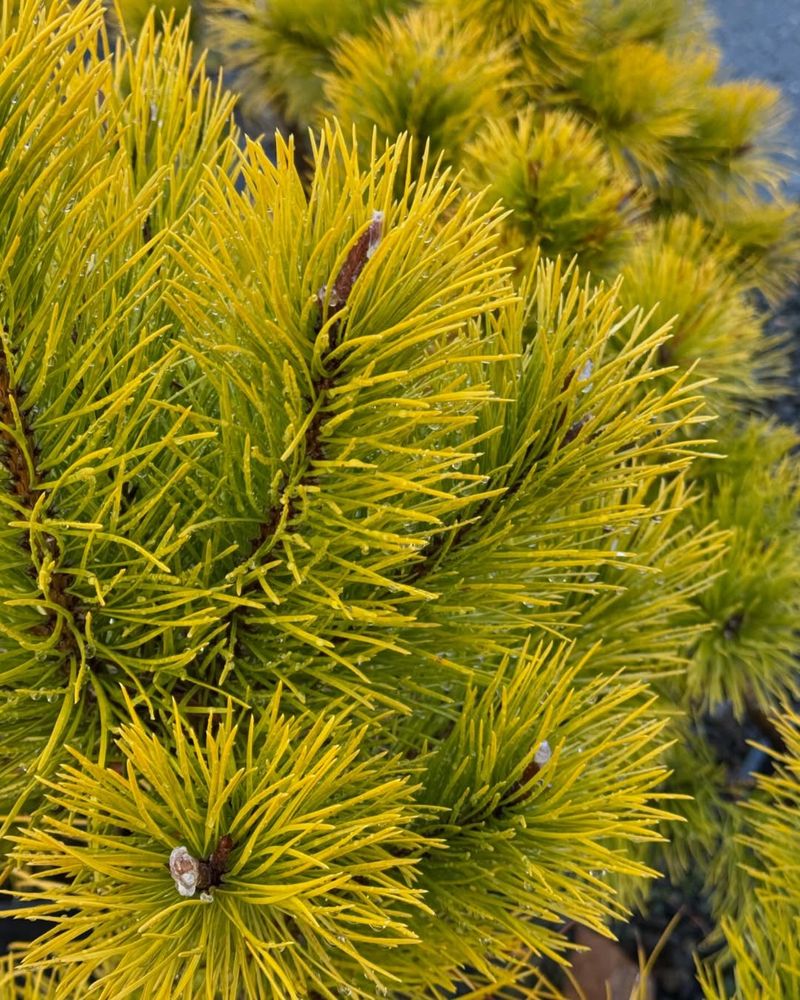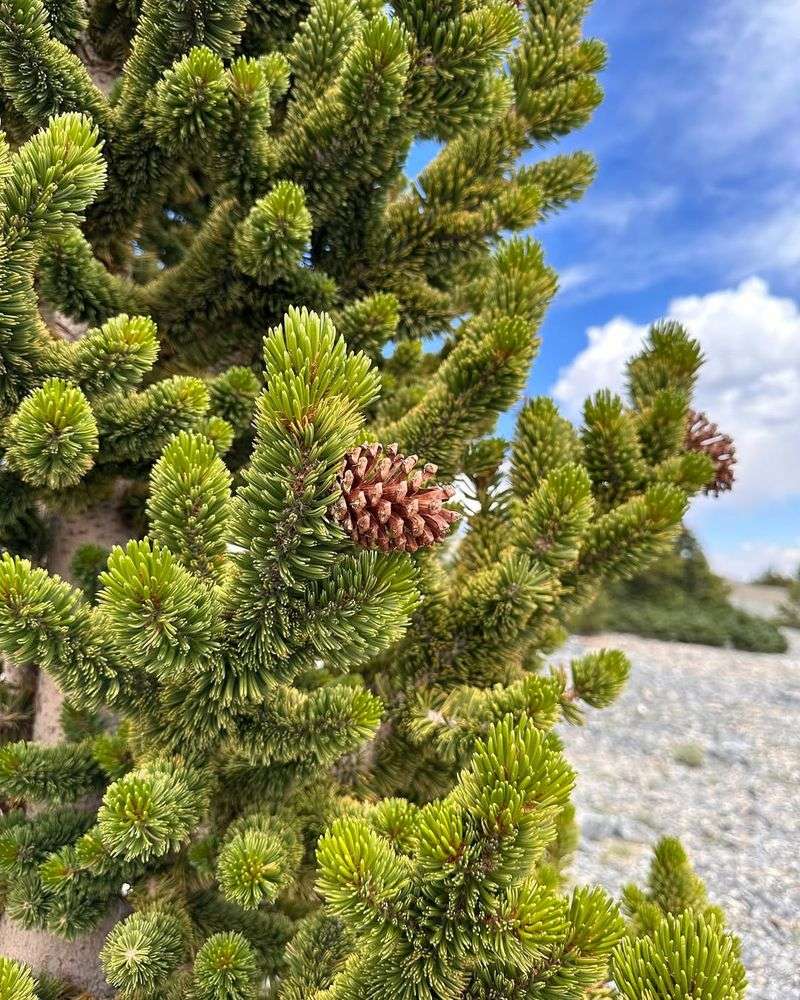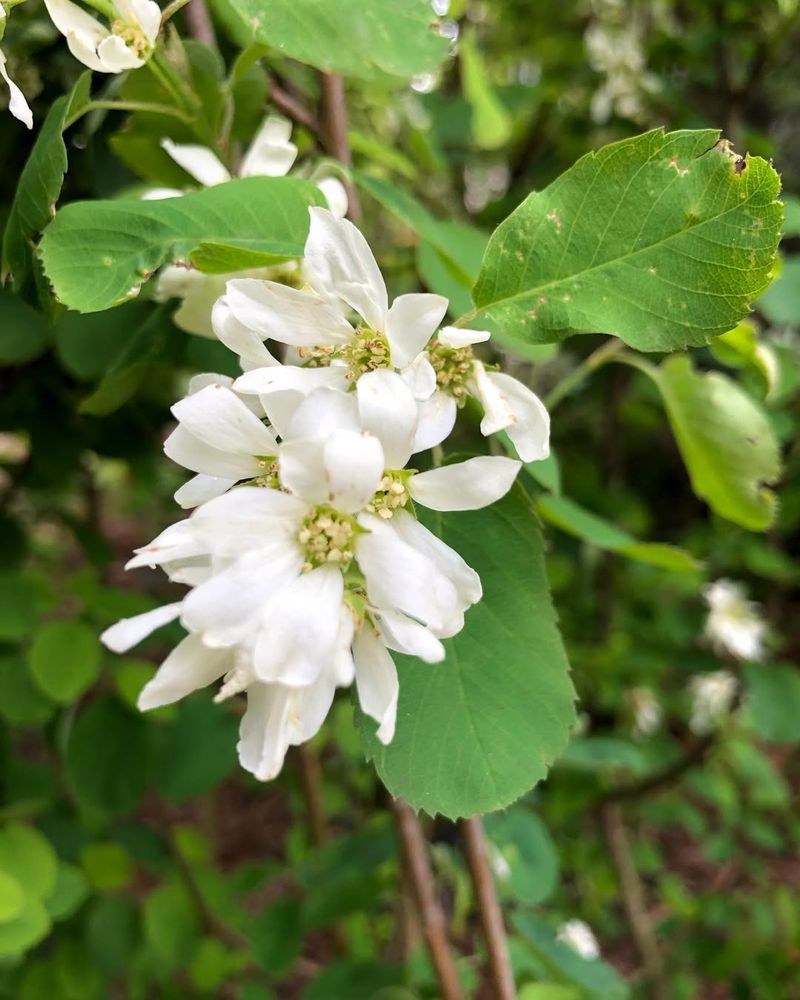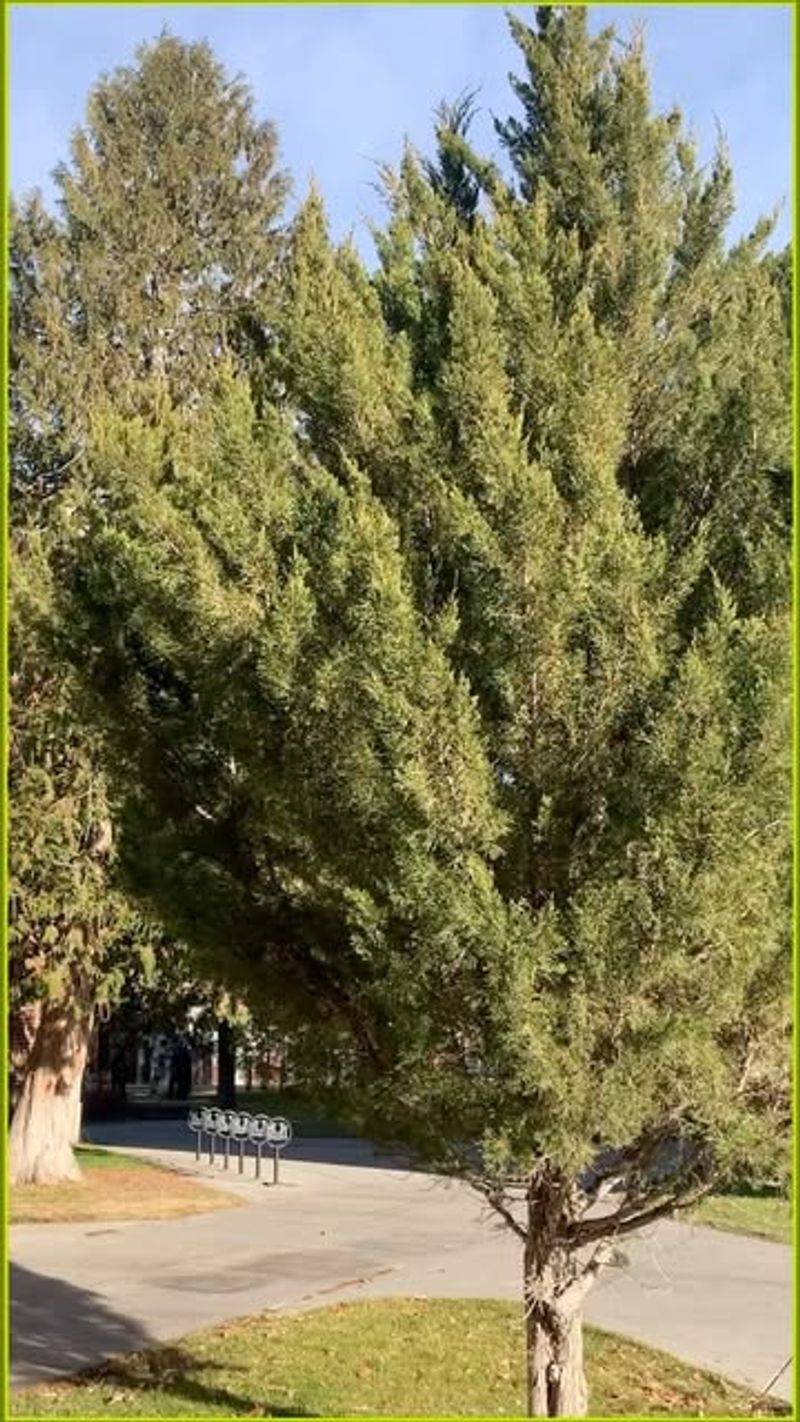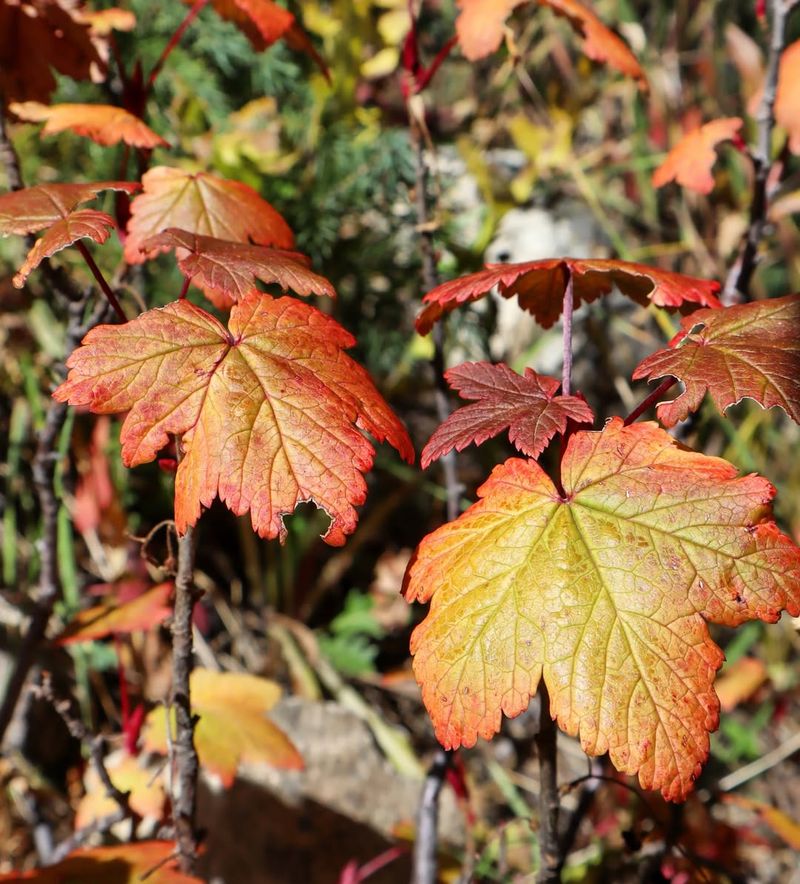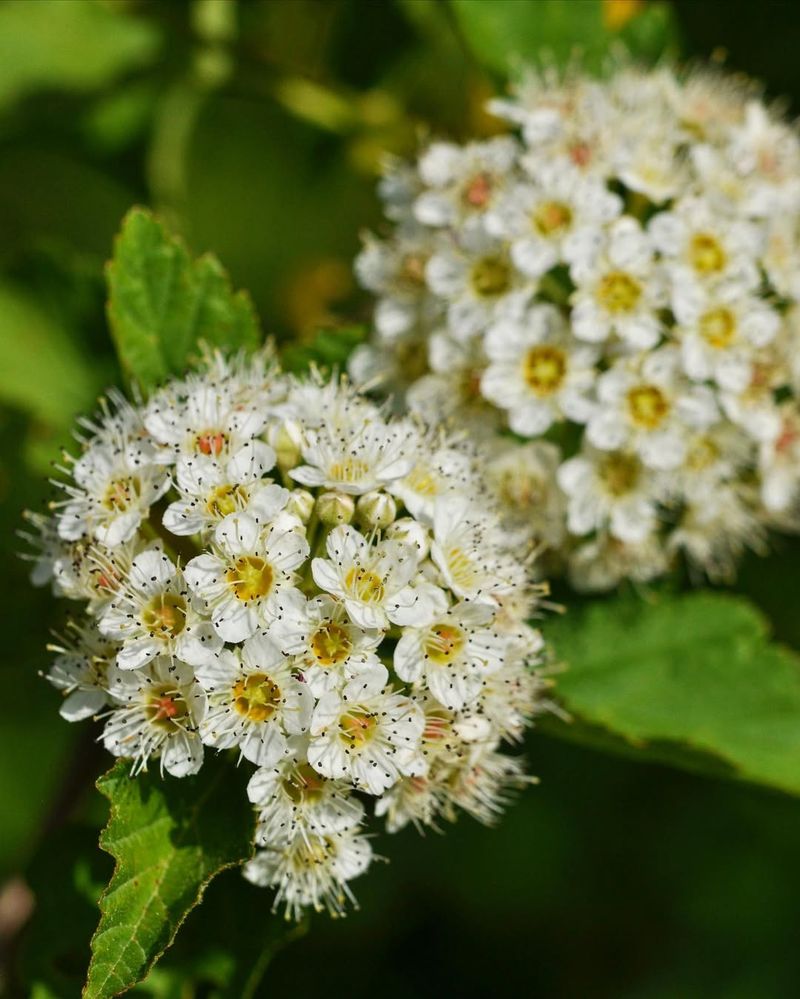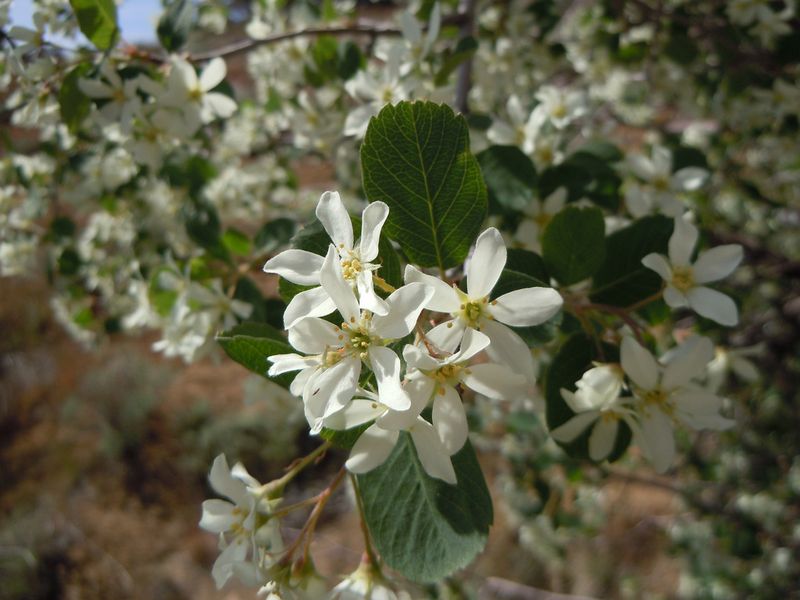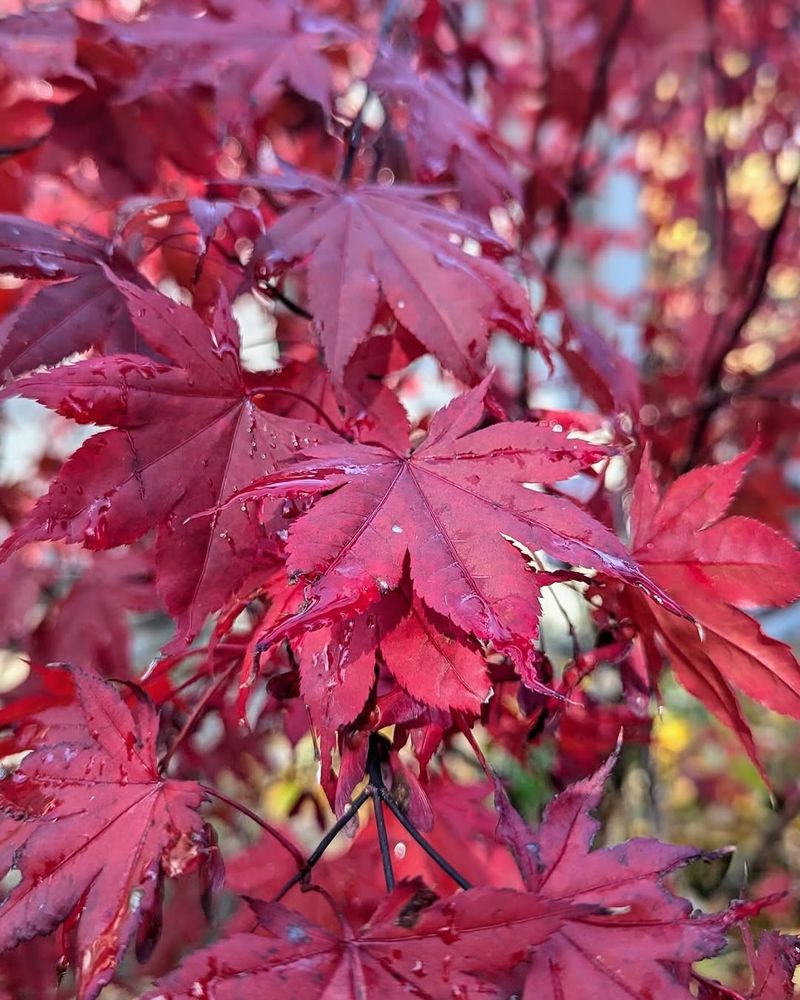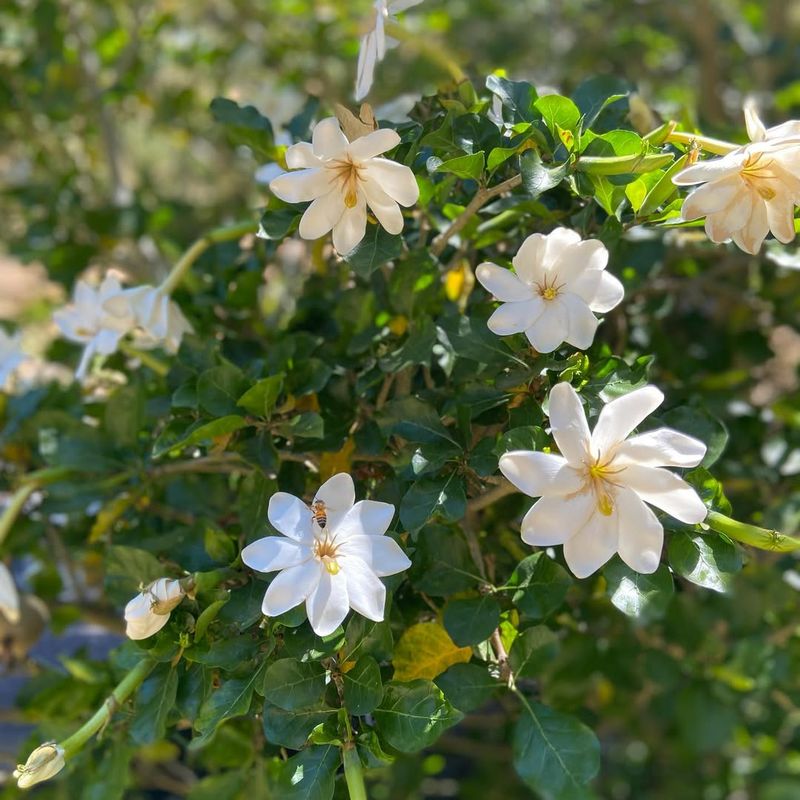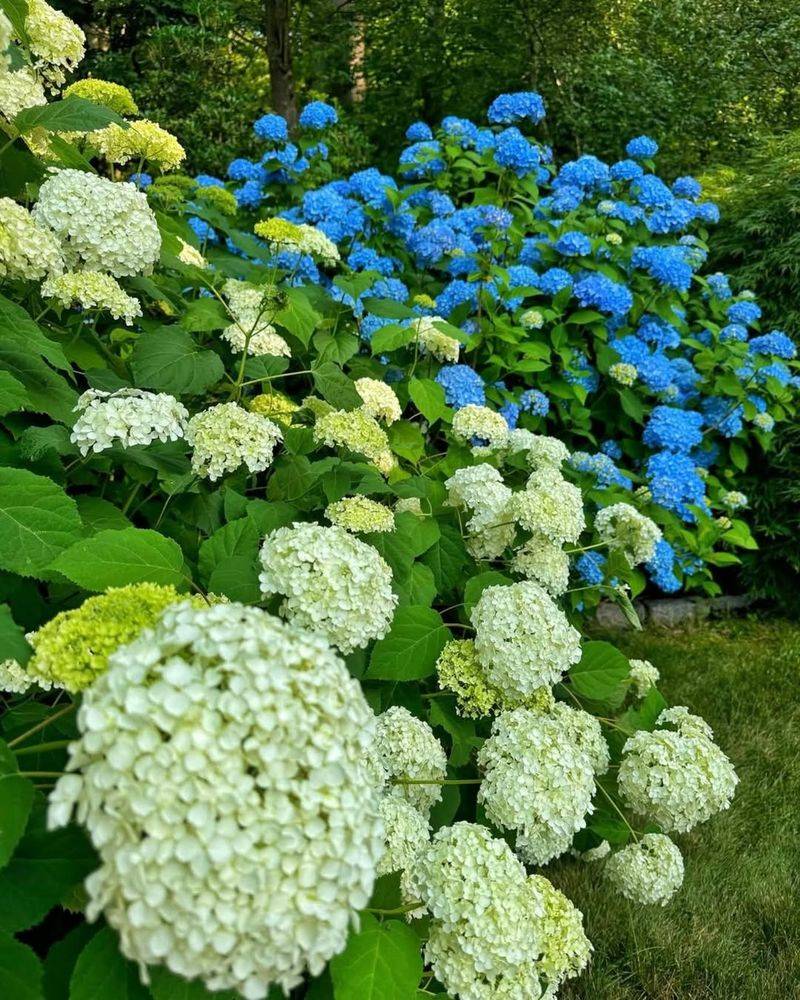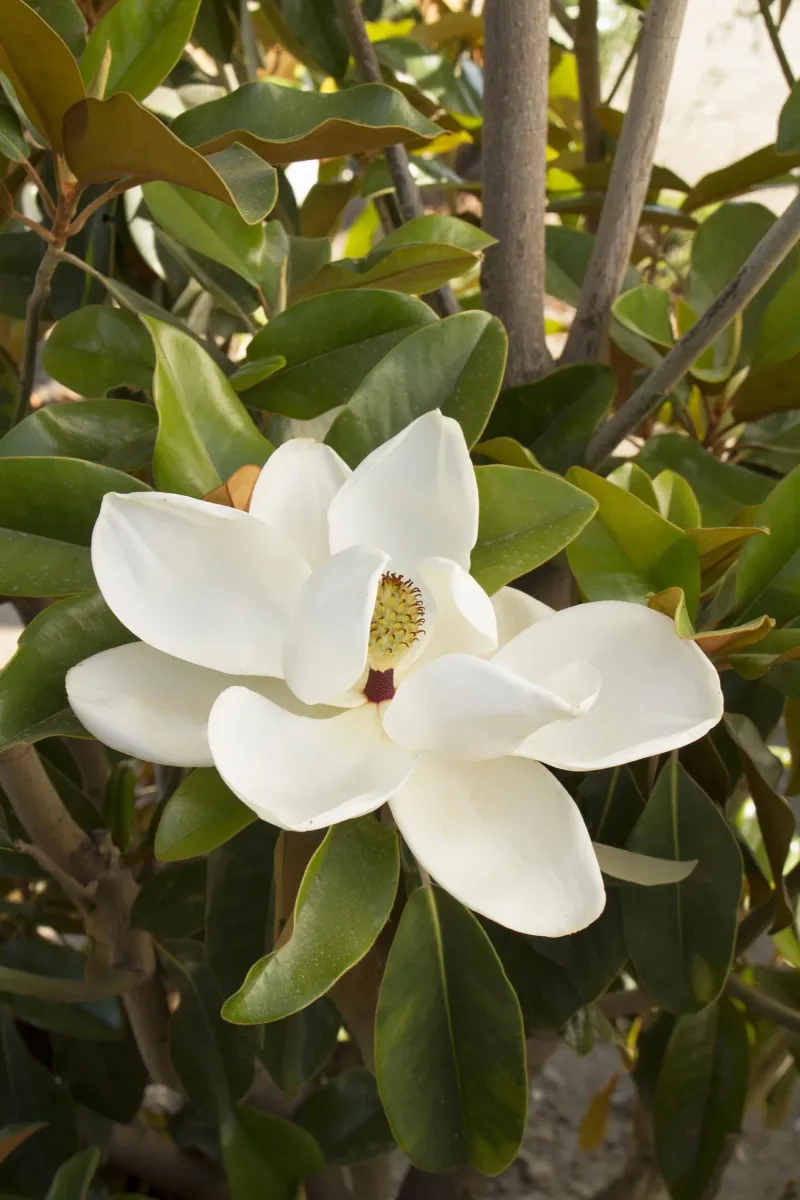Gardening at high altitudes isn’t for the faint of heart—intense sun, freezing nights, and thin, dry air make it a true test of survival. But with the right plants, you can turn your mountain landscape into a thriving oasis bursting with color, texture, and resilience. In this guide, we’ve rounded up 24 of the toughest, most stunning plants that thrive in high-altitude conditions—plus 5 that simply won’t survive no matter how much love you give them. Whether you’re battling rocky soil or unpredictable weather, these plants are ready to rise to the challenge!
1. Rocky Mountain Columbine (Aquilegia caerulea)
Picture a flower that dances in the wind, its blue and white petals fluttering like a butterfly in the breeze. The Rocky Mountain Columbine is such a wildflower, thriving in the cool embrace of mountainous terrains.
These dainty blossoms don’t just survive; they flourish in the high-altitude wonderland, bringing a splash of elegance to the rocky slopes. With a grace that’s hard to match, they encapsulate the spirit of mountain resilience, making them a favorite for those seeking beauty in the clouds.
Let these flowers inspire your high-altitude garden with their captivating charm.
2. Fireweed (Chamerion angustifolium)
Imagine a plant that boldly goes where no other plant dares, spreading its vibrant magenta blooms over disturbed landscapes. Meet the Fireweed, a perennial that thrives in high-altitude terrains, adding a burst of color where it’s least expected.
This plant is more than a pretty face; it’s a pioneer, quickly adapting to change and bringing life back to barren areas. Its magenta flowers are a beacon of resilience, drawing pollinators and admirers alike.
With Fireweed, your high-altitude garden will never lack personality or pizzazz. Let it lead the way to a colorful, vibrant landscape.
3. Pasque Flower (Pulsatilla patens)
In the world of wildflowers, the Pasque Flower stands out with its soft, fuzzy purple petals that herald the arrival of spring. These flowers are early bloomers, defying the chill of high-altitude meadows and rocky slopes.
Their resilience is matched only by their beauty, as they spread their charming petals in the face of adversity. This flower embodies the spirit of survival and elegance in equal measure, making it a perfect choice for alpine gardens.
Envision a meadow dotted with these lovely blooms, a testament to nature’s adaptability and grace.
4. Blue Flax (Linum lewisii)
Imagine the sky meeting the earth in a dance of color—such is the charm of Blue Flax with its delicate, sky-blue petals. This wildflower takes center stage in high-elevation meadows, thriving even in the thinnest of soils.
Blue Flax blooms profusely, painting the landscape with its cheerful hue and attracting pollinators in droves. Its ability to flourish in challenging conditions makes it a gardener’s dream for high-altitude landscaping.
Let these flowers sway in the mountain breeze, adding a touch of serenity and endless blue to your garden canvas.
5. Penstemon (Penstemon strictus)
Think of a plant that stands tall and proud, even in the harshest of environments—that’s Penstemon for you. With its tubular purple flowers, this plant is a magnet for hummingbirds, inviting them to high-altitude gardens.
Its drought-resistant nature makes it a resilient choice for mountainous terrains, where water is often a luxury. Penstemon’s hardy disposition and vibrant blooms make it a standout addition to any landscape.
Bring a touch of wildlife and a splash of color to your alpine garden with this tough yet charming plant, perfect for those high-altitude heights.
6. Edelweiss (Leontopodium alpinum)
Evoke the romance of the Alps with Edelweiss, a flower as legendary as it is beautiful. With woolly white petals, this alpine gem is celebrated for its cold resistance and timeless elegance.
Edelweiss isn’t just a pretty face; it’s a symbol of love and adventure, thriving in the harshest mountain conditions. Its rarity and beauty make it a coveted addition to any high-altitude garden.
Channel your inner mountaineer and invite the spirit of the mountains into your landscape with this iconic bloom, a testament to resilience and natural allure.
7. Alpine Aster (Aster alpinus)
Imagine a flower that laughs in the face of adversity, its bright purple petals defying harsh mountain conditions. That’s the Alpine Aster for you, a compact, daisy-like flower that’s all about resilience.
These asters bloom vibrantly, offering a splash of color in high-altitude landscapes even when water is scarce. Their adaptability makes them a great choice for gardeners looking to add a touch of whimsy to their alpine projects.
Celebrate the strength and beauty of nature with the Alpine Aster, a flower that embodies the spirit of perseverance and joy.
8. Goldenrod (Solidago spp.)
Think of a golden beacon standing tall in the landscape—that’s Goldenrod, a bright yellow perennial that brings sunshine to rocky, high-altitude soils.
This plant is more than just a visual delight; it’s a crucial supporter of pollinators, offering nectar to bees and butterflies. Goldenrod’s adaptability to rugged conditions makes it a favorite among gardeners aiming to support wildlife.
Let your garden shine with the vibrant hues of Goldenrod, a plant that marries beauty and ecological responsibility in one glorious package.
9. Bearberry (Arctostaphylos uva-ursi)
Imagine a carpet of green that stays lush and inviting all year round—such is the charm of Bearberry. This low-growing evergreen ground cover is perfect for high-altitude landscapes, offering vibrant red berries as an added treat.
Bearberry’s resilient nature ensures it thrives where other plants falter, providing a beautiful backdrop to any garden design. Its year-round appeal makes it a versatile choice for those seeking continuous color and interest.
With Bearberry in your garden, you’ll have a reliable ally in the quest for a stunning, evergreen landscape.
10. Mountain Mahogany (Cercocarpus montanus)
Picture a shrub that holds its own against the rugged mountain environment—Mountain Mahogany does just that. With its twisted silver seed heads and deep-rooted resilience, this shrub is a true survivor.
Mountain Mahogany thrives in dry conditions, anchoring rocky slopes and offering stability where needed. Its unique appearance adds a touch of wild elegance to any high-altitude garden.
Choose Mountain Mahogany to bring both beauty and functionality to your landscape, ensuring a garden that’s as robust as it is enchanting.
11. Blue Grama Grass (Bouteloua gracilis)
Imagine grass so unique that its seed heads resemble eyelashes fluttering in the breeze. That’s Blue Grama Grass for you, a tough, drought-tolerant native perfect for high-altitude prairies.
This grass isn’t just about aesthetics; it offers durability and resilience, standing up to the challenges of mountain climates. Its whimsical appearance and adaptability make it a favorite among gardeners looking to add texture and charm.
Embrace the playful elegance of Blue Grama Grass, a delightful addition to your high-altitude garden that offers both form and function.
12. Tufted Hairgrass (Deschampsia cespitosa)
Picture an ornamental grass that seems to dance in the wind, its fine-textured golden tufts catching the light. That’s the appeal of Tufted Hairgrass, perfect for high-altitude gardens.
This grass thrives in cold regions, offering a graceful appearance that’s hard to resist. Its adaptability to varying conditions makes it a versatile choice for gardeners aiming to create elegant landscapes.
Add a touch of sophistication to your garden with Tufted Hairgrass, a plant that brings both beauty and resilience to high-altitude environments.
13. Creeping Phlox (Phlox subulata)
Imagine a cascade of color tumbling over rocky ledges—that’s the vibrant display offered by Creeping Phlox. This low-growing perennial brings an explosion of blooms to high-altitude gardens.
Creeping Phlox is a master of adaptability, thriving where other plants struggle. Its colorful blossoms provide a striking contrast against rocky terrain, adding a touch of whimsy.
Let Creeping Phlox transform your garden into a tapestry of vibrant hues, weaving color and life into even the most challenging landscapes.
14. Parry’s Oatgrass (Danthonia parryi)
Picture a grass that stands tall in the face of cold—it’s Parry’s Oatgrass, a resilient choice for alpine meadows. Its golden seed heads add structure and texture to high-altitude landscapes.
This grass is all about endurance, thriving where others wilt under the pressure of chilly climates. Its presence adds a touch of elegance to any garden space, with its graceful appearance and sturdy disposition.
Choose Parry’s Oatgrass for a garden that boasts both beauty and resilience, a testament to nature’s adaptability.
15. Snow-in-Summer (Cerastium tomentosum)
Imagine a carpet of snow that never melts, blanketing your garden with beauty. Snow-in-Summer offers just that, with its silver foliage and white blooms.
This hardy ground cover thrives in high-altitude landscapes, where cool temperatures and rocky soils challenge lesser plants. Its elegant appearance and resilience make it a favorite among gardeners aiming for year-round interest.
Let Snow-in-Summer bring a touch of ethereal beauty to your garden, creating a serene and timeless landscape.
16. Quaking Aspen (Populus tremuloides)
Imagine a forest of shimmering gold, where leaves tremble with the slightest breeze. That’s the Quaking Aspen, a tree that transforms high-altitude landscapes in the fall.
This fast-growing tree isn’t just about beauty; its ability to thrive in cold soils makes it a practical choice for gardeners. Its shimmering leaves add dynamic movement and color to any garden space.
Invite the magic of autumn into your landscape with Quaking Aspen, a tree that promises both visual appeal and adaptability.
17. Engelmann Spruce (Picea engelmannii)
Picture a towering conifer that braves the coldest of temperatures—Engelmann Spruce stands tall in mountainous regions. Its dense blue-green needles offer a lush presence.
This tree is the epitome of endurance, withstanding freezing temperatures and harsh winds, making it a reliable choice for high-altitude gardens. Its evergreen nature ensures year-round visual interest.
Bring the elegance and strength of Engelmann Spruce to your landscape, creating a garden that’s as majestic as the mountains themselves.
18. Lodgepole Pine (Pinus contorta)
Imagine a tree that’s tough enough to withstand the wildest of mountain conditions—the Lodgepole Pine. Its slender trunks and deep roots make it a stabilizing force on rugged slopes.
This pine is a symbol of resilience, thriving where other trees might falter. Its adaptability and strength make it a popular choice for eco-conscious gardeners looking to support the natural environment.
Choose Lodgepole Pine for a landscape that marries aesthetic appeal with ecological stability, perfect for high-altitude settings.
19. Bristlecone Pine (Pinus longaeva)
Picture a tree that’s stood the test of time—the Bristlecone Pine. Known for its ancient roots, this pine survives the most extreme mountain conditions.
Its slow growth and remarkable longevity make it a living testament to resilience. This pine is not just a tree but a piece of history, ideal for those who appreciate nature’s wonders.
Add a touch of timeless beauty to your garden with Bristlecone Pine, creating a landscape that’s both awe-inspiring and enduring.
20. Serviceberry (Amelanchier alnifolia)
Imagine a shrub that’s as delightful in spring as it is in summer—the Serviceberry. With fragrant white flowers, this hardy shrub leads the way to a bountiful harvest.
In summer, it offers edible blue berries, making it a favorite for both gardeners and wildlife. Its multi-season appeal and hardiness make it a versatile choice for high-altitude landscapes.
Bring beauty and bounty to your garden with Serviceberry, a plant that’s as generous as it is charming.
21. Rocky Mountain Juniper (Juniperus scopulorum)
Picture a plant that thrives in the harshest of environments—the Rocky Mountain Juniper. With its tough, drought-resistant nature, this juniper is a stalwart of rocky soils.
Its blue berries and evergreen foliage offer year-round interest and beauty. This plant is a testament to nature’s ability to adapt and flourish in challenging conditions.
Choose Rocky Mountain Juniper for a garden that’s as rugged as it is beautiful, bringing a touch of wild elegance to high-altitude landscapes.
22. Mountain Maple (Acer glabrum)
Imagine a tree that lights up with the colors of fall—the Mountain Maple brings vibrant red foliage to high-altitude landscapes.
This small, cold-hardy maple is perfect for adding a pop of color in cooler climates. Its adaptability and beauty make it a favorite among gardeners looking to embrace the changing seasons.
Let Mountain Maple transform your garden into an autumnal tapestry of color, offering a stunning visual display.
23. Ninebark (Physocarpus monogynus)
Picture a shrub with character—Ninebark, with its peeling bark and clusters of pinkish-white flowers, offers intrigue and beauty.
This resilient plant thrives in diverse conditions, making it a low-maintenance choice for high-altitude gardens. Its unique appearance adds visual interest and texture.
Choose Ninebark to bring a touch of rustic charm and natural beauty to your garden, ensuring a landscape that’s both appealing and easy to care for.
24. Western Serviceberry (Amelanchier utahensis)
Imagine a shrub that’s a favorite among both gardeners and wildlife—the Western Serviceberry. With its fragrant blossoms, this shrub offers beauty and utility.
Its small edible berries are a treat for birds, making it a wildlife-friendly choice. The compact size and adaptability make it perfect for high-altitude gardens.
Bring life to your landscape with Western Serviceberry, offering a haven for wildlife and a touch of elegance.
25. Japanese Maple – Too Delicate for Harsh Mountain Weather
Picture a tree that’s both beautiful and delicate—the Japanese Maple. Despite its stunning appearance, this tree struggles with high-altitude conditions.
Frost, wind, and thin air are formidable challenges for this fragile beauty, making it a less suitable choice for mountainous gardens. However, its visual appeal remains undeniable.
For those in lower altitudes, Japanese Maple offers a touch of elegance, but it’s a reminder of the delicate balance of nature.
26. Gardenia – Too Sensitive for Cold Nights
Imagine a shrub that fills the air with fragrance—the Gardenia. This tropical beauty is known for its intoxicating scent, but it’s unsuitable for high-altitude gardens.
Freezing temperatures and short growing seasons pose significant challenges for this sensitive shrub. Its needs for warmth and humidity make it better suited for more temperate climates.
Let Gardenia remind you of the tropical allure, but in the mountains, it remains a distant dream.
27. Hydrangea – Needs More Humidity & Protection
Picture a shrub that’s as thirsty as it is beautiful—Hydrangea, with its lush blooms, demands more humidity and shade.
In high-altitude landscapes, this plant struggles with dryness and intense sun exposure, making it a challenging choice for alpine gardens. Its beauty is best appreciated in sheltered, moist environments.
While Hydrangea’s charm is undeniable, its suitability for mountain climates is limited, reminding us of the importance of environmental harmony.
28. Southern Magnolia – Needs More Humidity & Protection
Imagine a tree of elegance and grandeur—the Southern Magnolia. With its glossy leaves and fragrant blooms, this tree is a symbol of Southern charm.
However, the harsh conditions of high altitudes, including frost and wind, make survival challenging for this delicate beauty. It’s a reminder of the climate’s unforgiving nature.
While Southern Magnolia captivates with its presence, its place remains in warmer, more hospitable climates.
29. Boxwood – Struggles in Extreme Cold & Sun
Picture a hedge that’s both classic and challenged—the Boxwood. This evergreen is a staple in gardens but faces difficulties at high altitudes.
Winter burn and slow growth are common issues for Boxwood in extreme cold and sun, making it a less ideal choice for alpine settings. Its resilience is tested in these environments.
While Boxwood offers structure and form in many gardens, its suitability for high-altitude landscapes is a cautionary tale of plant selection.

